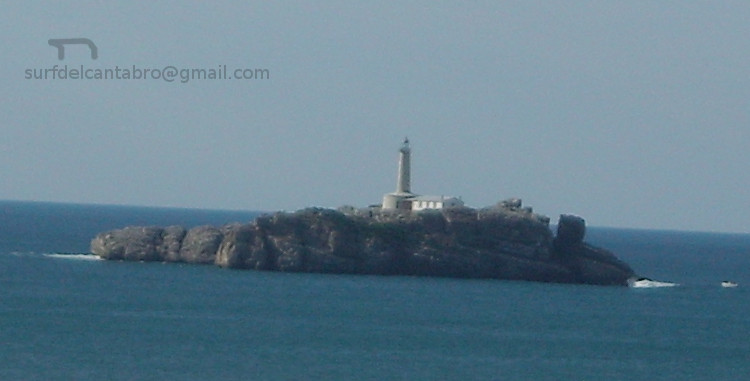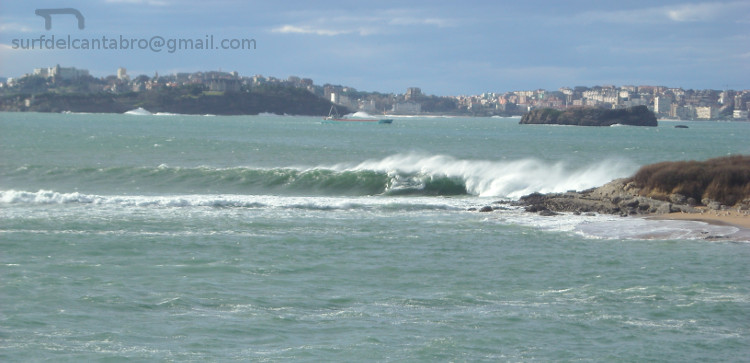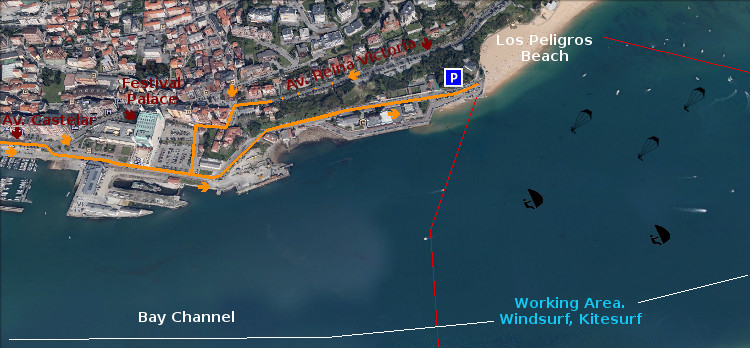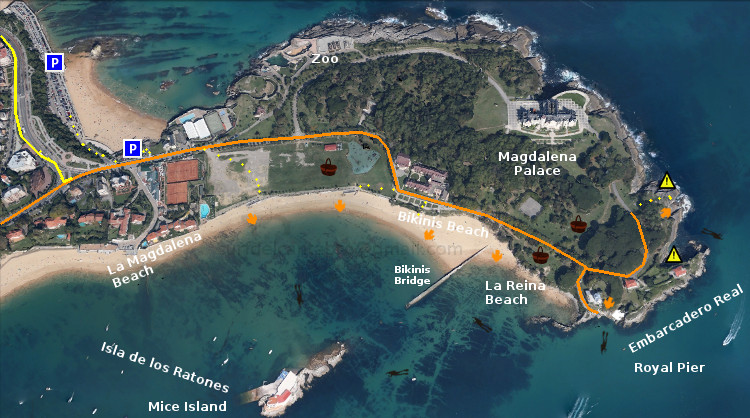 Elegir un traje de surf es una decisión que vamos a disfrutar o padecer durante varios años. Todo ello depende de tomar la opción más adecuada para cada uno.
Elegir un traje de surf es una decisión que vamos a disfrutar o padecer durante varios años. Todo ello depende de tomar la opción más adecuada para cada uno.
En este artículo expongo mi punto de vista y experiencia al respecto. Deseando que pueda servir de guía a la hora de comprar un traje de surf.
Parámetros para una buena elección :
- Utilización
- Tallaje
- Medidas
- Grosor
- Tipos de trajes
1. Utilización. ¿ En que época del año vamos a usar el traje ? . Según la estación del año en la que practiquemos surf el grosor del traje y su tipo varían. Las variaciones incluyen trajes: largo o cortos, distintos grosores en milímetros del neopreno, elaboración del traje: sellado o costuras planas …
2. Tallaje. Las tallas de los trajes de surf vienen determinadas por las marcas. Prácticamente todos los fabricantes tienen su propio tallaje. Esto no significa que no sean equivalentes entre las distintas métricas. Pero si que podemos encontrar diferencias entre tallas en principio similares.
3. Medidas. Se trata de de obtener una imagen holográfica de nuestro contorno corporal a partir de unas mediciones hechas en centímetros o pulgadas (1 pulgada = 2,54 centímetros). Los datos más importantes son los siguientes :
- Estatura
- Peso, kg/LB (1 kg = 2 lb)
- Pecho
- Cintura
- Pelvis (parte inferior de la cadera)
4. Grosor. Este parámetro esta muy relacionado con la temperatura del agua. Tabla orientativa (milímetros – Grados Centígrados):
- 2 mm : 17-21
- 3 mm : 14-17
- 4 mm : 10-14
- 5 mm : 8-10
- 6 mm : 8 ó menos
Nota: los trajes de surf no tienen generalmente toda su superficie con el mismo grosor. Por ejemplo si su grosor es de 4 mm, se refiere al grosor de las piernas y el pecho, los brazos 3 mm. Hay que tener esto en cuenta. Es por ello que se pueden acompañar de guantes, escarpines y gorro; según sea necesario.
5. Tipos de trajes. Principales criterios :
- Corto ó largo. Cualquier combinación respecto a la cobertura del cuerpo.
- Costuras planas, ciegas o selladas (Mayor aislamiento de derecha a izquierda).
- Cremallera : en la espalda( más cómodo de poner) o en el pecho( entra menos agua).
Consejo : el traje de surf debe quedar ajustado y que nos permita respirar cómodamente. Prestar atención al material de ciertas partes del traje, el cuello es preferible que sea hipoalergénico.
How to choose a wetsuit
 When you choose a suit of surf is a decision that we are going to enjoy or suffer for several years. All of this depends on taking the most appropriate option for each one.
When you choose a suit of surf is a decision that we are going to enjoy or suffer for several years. All of this depends on taking the most appropriate option for each one.
In this article I explain my point of view and experience in this regard. Looking forward that can serve as a guide to buying a suit of surfing.
Parameters for a good choice :
- Purpose
- Sizing
- Measures
- Thickness
- Type of wetsuits
1. Purpose. What time of year we are going to use the costume ? . According to the season of the year in which we practice surfing the thickness of the wetsuit and its type are different. Variations include: wetsuits long or short, different thicknesses in millimeters of the neoprene, development of the wetsuit: sealing or flat seams …
2. Sizing. The sizing of the wetsuits are determined by the marks. Virtually all manufacturers have their own scale . This does not mean they are not equivalent between the various metrics. But we could find differences between the same size with different brands.
3. Measures. This is to obtain a holographic image of our body contour from a few measurements made in inches or centimeters (1 inch = 2.54 centimeters). The most important data are the following :
- Height
- Weight, kg/lb (1 kg = 2 lb)
- Chest
- Waist
- Pelvis (bottom of the hip)
4. Thickness. This parameter is closely related to the temperature of the water. Indicative Table (millimeters – degrees Celsius):
- 2 mm : 17-21
- 3 mm : 14-17
- 4 mm : 10-14
- 5 mm : 8-10
- 6 mm : 8 ó menos
Note: the wetsuits do not usually have their entire surface with the same thickness. For example if its thickness is 4 mm, refers to the thickness of the legs and chest, the arms, 3 mm. This needs to be taken into account. That is why you can accompany of gloves, boots and hat; as needed.
5. Types of wetsuits. Main concepts:
- Short or long. Any combination for coverage of the body.
- Flat seams, blind or sealed (greater isolation from right to left).
- Zip : in the back( more convenient to put) or in the chest( enters less water) .
Advise : the wetsuit should be tight and must to allows us to breathe comfortably.
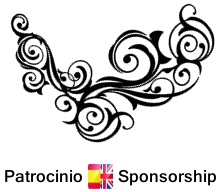
![]() El origen del nombre de Isla de Mouro se remonta al siglo XVIII que es cuando se realiza el primer Atlas Hidrográfico de España. En ese libro se incluían todas las islas de nuestro páis, entre las que se encontraba la que hoy conocemos como Isla de Mouro. Su nombre original era Isla de Mogro, pero debido a un error en la transcripción hecha por el cartógrafo Vicente Tofiño de San Miguel, se registro el nombre Isla de Mouro, que se ha conservado hasta nuestros días.
El origen del nombre de Isla de Mouro se remonta al siglo XVIII que es cuando se realiza el primer Atlas Hidrográfico de España. En ese libro se incluían todas las islas de nuestro páis, entre las que se encontraba la que hoy conocemos como Isla de Mouro. Su nombre original era Isla de Mogro, pero debido a un error en la transcripción hecha por el cartógrafo Vicente Tofiño de San Miguel, se registro el nombre Isla de Mouro, que se ha conservado hasta nuestros días. ![]() The origin of the name of the Island of Mouro goes back to the eighteenth century that is when the first Hydrographic Atlas of Spain had been done. In that book were included all the islands of our country. Among the islands, Mouro Island. Its original name was Island of Mogro, but due to an error in the transcript by the cartographer Vicente Tofino of San Miguel, the name of Island of Mouro was recorded and it has been preserved until our days.
The origin of the name of the Island of Mouro goes back to the eighteenth century that is when the first Hydrographic Atlas of Spain had been done. In that book were included all the islands of our country. Among the islands, Mouro Island. Its original name was Island of Mogro, but due to an error in the transcript by the cartographer Vicente Tofino of San Miguel, the name of Island of Mouro was recorded and it has been preserved until our days.![]()
